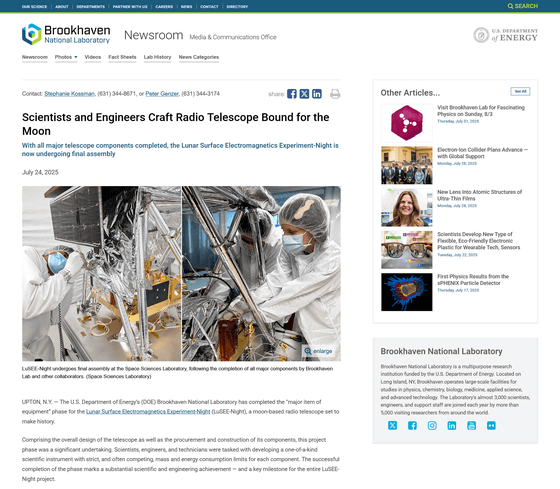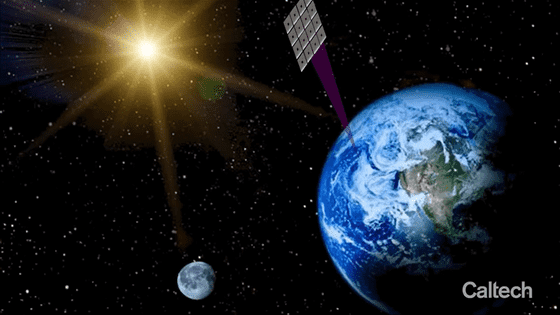Lunar radio telescope 'LuSEE-Night' is nearing completion, with a highly sensitive radio spectrometer capable of detecting radio waves from the dark ages of the universe

The U.S. Department of Energy's Brookhaven National Laboratory has announced that it has completed the procurement phase of key components for the Lunar Surface Electromagnetics Experiment-Night (LuSEE-Night), a radio telescope to be installed on the moon. Launch is scheduled for 2026.
Scientists and Engineers Craft Radio Telescope Bound for the Moon | BNL Newsroom

Lunar Telescope Will Search for Ancient Radio Waves | BNL Newsroom
https://www.bnl.gov/newsroom/news.php?a=119559
LuSEE-Night is a radio telescope planned to be installed on the far side of the Moon, a harsh environment that will experience 14 days of complete darkness followed by 14 days of continuous sunlight, temperatures fluctuating wildly from approximately -170°C to +140°C, and little protection from cosmic radiation.
While the environment is so unique that few missions have been able to operate their instruments for more than a day, there is no radio interference from the sun or Earth, which means there are vast scientific opportunities.
In particular, cosmologists are trying to detect radio waves known as the 'Dark Ages Signal,' which remain deep in space and were emitted during the early dark ages of cosmic history, which began approximately 380,000 years after the Big Bang. Observing this signal from Earth is difficult due to numerous radio interferences, but it is hoped that it may be possible to observe it from the far side of the Moon. Uncovering this dark age signal could potentially unlock answers to some of the universe's greatest mysteries, such as the nature of dark energy and the formation of the universe itself.
The LuSEE-Night project is led by the University of California, Berkeley's Space Studies Institute (SSL), with participation from several other institutions, including Brookhaven National Laboratory and Lawrence Berkeley National Laboratory. The core scientific instrument is a highly sensitive radio spectrometer custom-built by Brookhaven National Laboratory. The raw radio signals captured by LuSEE-Night's antennas are converted into a spectrum by the spectrometer for scientific analysis, enabling it to detect low-frequency radio waves and demonstrate the feasibility of lunar radio astronomy.
While other spectrometers can only capture about 1% of the available information, the spectrometer on LuSEE-Night is said to be able to receive radio waves from the early universe with 100% accuracy.
LuSEE-Night is currently being assembled at SSL and will undergo environmental testing at Utah State University's Astrodynamics Laboratory in the summer of 2025. It will then be transported by fall and eventually integrated into the Blue Ghost 2 lunar lander, with launch planned for 2026.
Related Posts:
in Science, Posted by logc_nt







